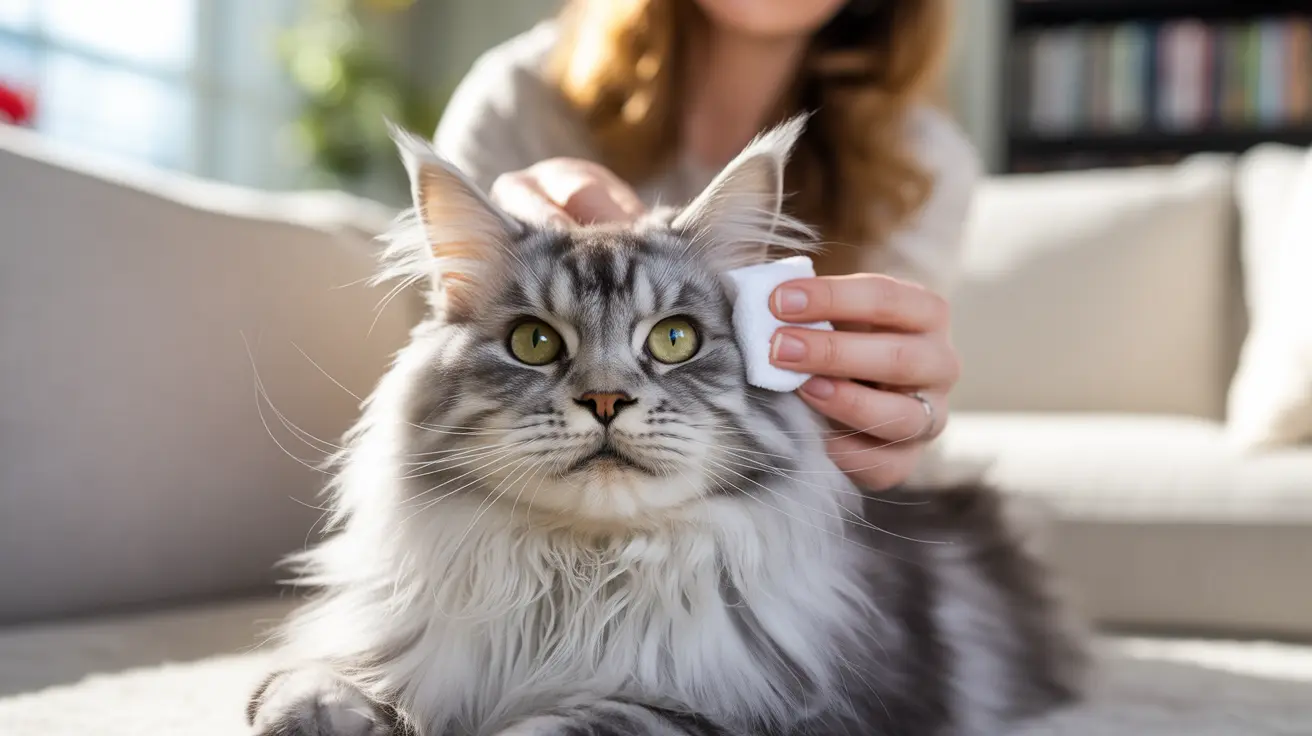As a cat owner, you've likely noticed those crusty deposits that sometimes form in the corners of your feline friend's eyes. These cat eye boogers, while often harmless, can sometimes signal underlying health issues that require attention. Let's explore everything you need to know about this common feline occurrence.
Understanding cat eye boogers is crucial for maintaining your pet's ocular health. While some discharge is normal and helps keep your cat's eyes clean and healthy, changes in consistency, color, or quantity can indicate problems requiring veterinary care.
What Are Cat Eye Boogers?
Cat eye boogers are accumulations of tears, debris, and cellular matter that collect in and around the eyes. Normal discharge is typically clear to slightly brown and appears as small crusts, especially after your cat wakes from sleep.
This natural discharge serves an important purpose: it helps protect the eye by trapping and removing debris, dust, and potential irritants. However, excessive or abnormal discharge can indicate various health issues.
Common Causes of Eye Discharge in Cats
Normal Tear Production
Healthy cats produce tears continuously to lubricate their eyes and remove debris. This normal process can result in small amounts of crusty discharge, particularly visible in the morning.
Medical Conditions
More concerning causes of eye discharge include:
- Upper respiratory infections
- Conjunctivitis (pink eye)
- Corneal injuries or ulcers
- Allergies
- Blocked tear ducts
- Feline herpesvirus
Signs That Warrant Veterinary Attention
While some eye discharge is normal, certain symptoms indicate a need for professional evaluation:
- Yellow or green discharge
- Excessive tearing
- Redness or swelling around the eyes
- Squinting or apparent discomfort
- Changes in vision or behavior
- Discharge accompanied by sneezing or nasal congestion
Treatment and Home Care
Treatment depends on the underlying cause but may include:
- Gentle cleaning with warm water and a soft cloth
- Prescribed antibiotic or antiviral medications
- Anti-inflammatory treatments
- Surgery for structural issues
Never use over-the-counter human eye medications without veterinary approval, as these can potentially harm your cat's eyes.
Prevention Tips
To help minimize eye discharge problems:
- Keep your cat's face clean
- Maintain regular veterinary check-ups
- Control environmental allergens
- Monitor for early signs of eye issues
- Keep your cat's vaccinations current
Frequently Asked Questions
Why does my cat have eye boogers and when should I be worried?
Some eye boogers are normal and result from your cat's natural tear production. However, you should be concerned if you notice colored discharge (yellow or green), excessive amounts, or if it's accompanied by other symptoms like redness or discomfort.
How can I safely clean my cat's eye boogers at home?
Use a clean, soft, damp cloth or cotton ball to gently wipe from the inner corner outward. Use separate cloths for each eye to prevent cross-contamination. Never use harsh chemicals or human eye products.
What are the common causes of colored or excessive eye discharge in cats?
Colored or excessive discharge often indicates infection, injury, or illness. Common causes include bacterial or viral infections, allergies, corneal injuries, or blocked tear ducts.
Can allergies or environmental irritants cause my cat's eyes to produce boogers?
Yes, allergies and irritants like dust, pollen, or smoke can increase eye discharge. If you notice seasonal patterns or discharge following exposure to certain substances, allergies may be the cause.
When should I take my cat to the vet for persistent or unusual eye discharge?
Seek veterinary care if you notice yellow or green discharge, excessive tearing, eye redness or swelling, signs of discomfort, or if the discharge persists for more than a few days.
Remember, while some eye discharge is normal, significant changes in your cat's eye health should never be ignored. When in doubt, consult with your veterinarian to ensure your feline friend's eyes remain healthy and comfortable.






